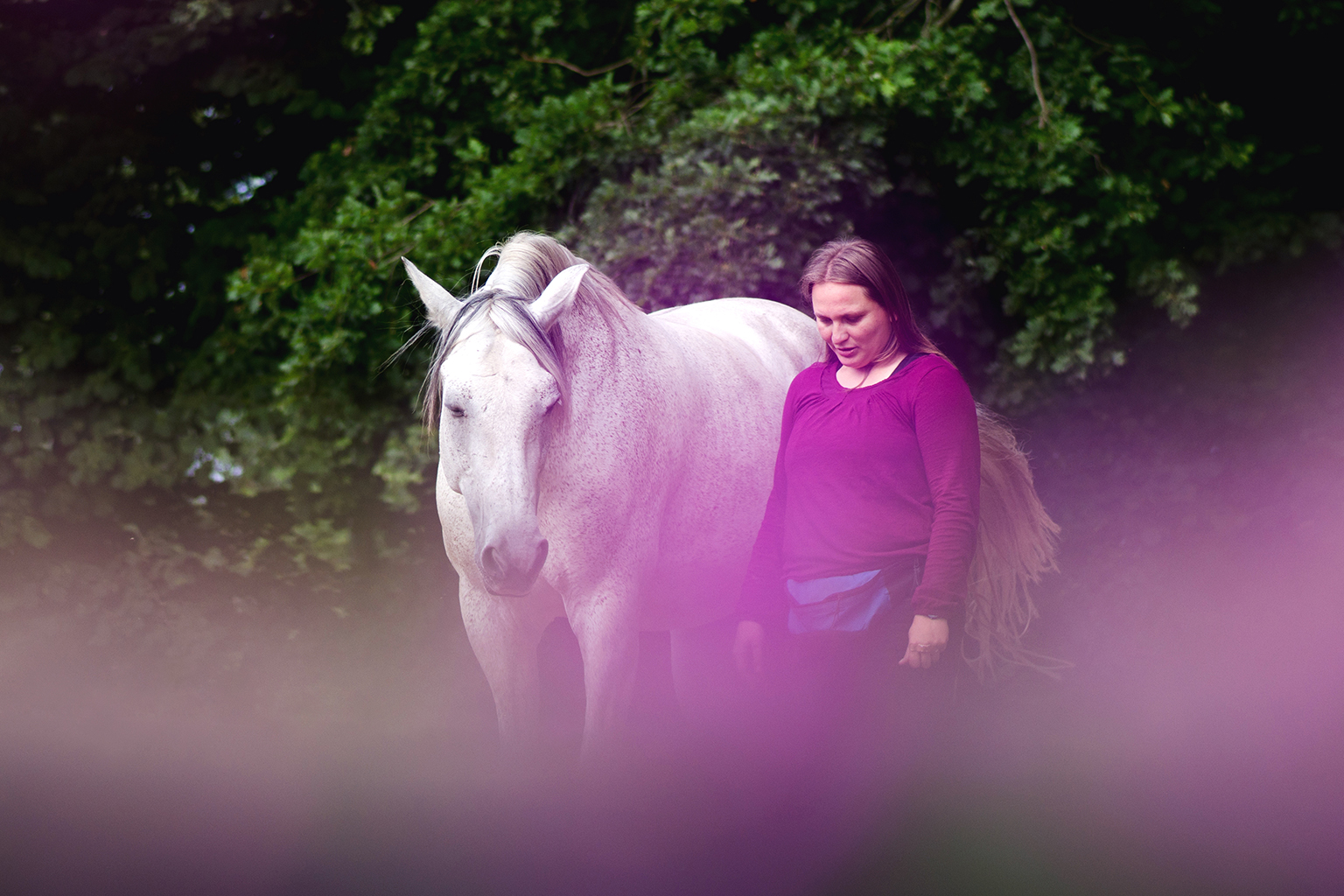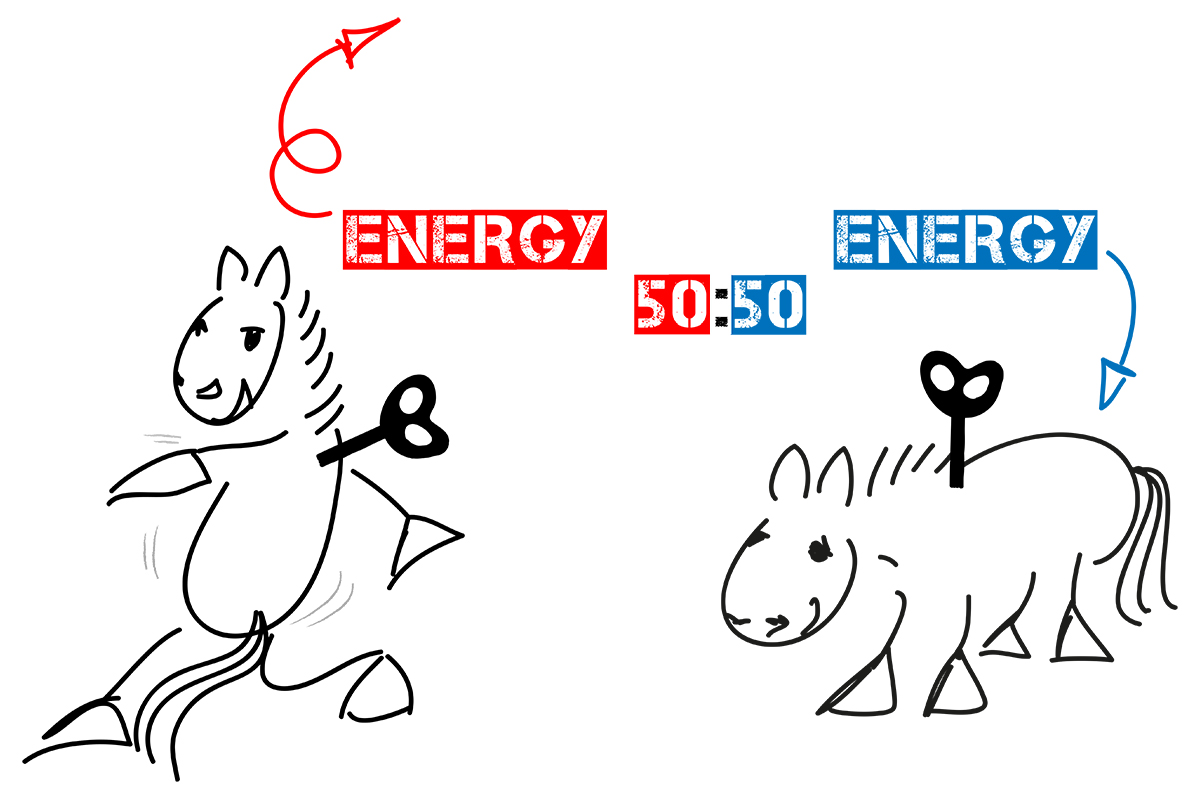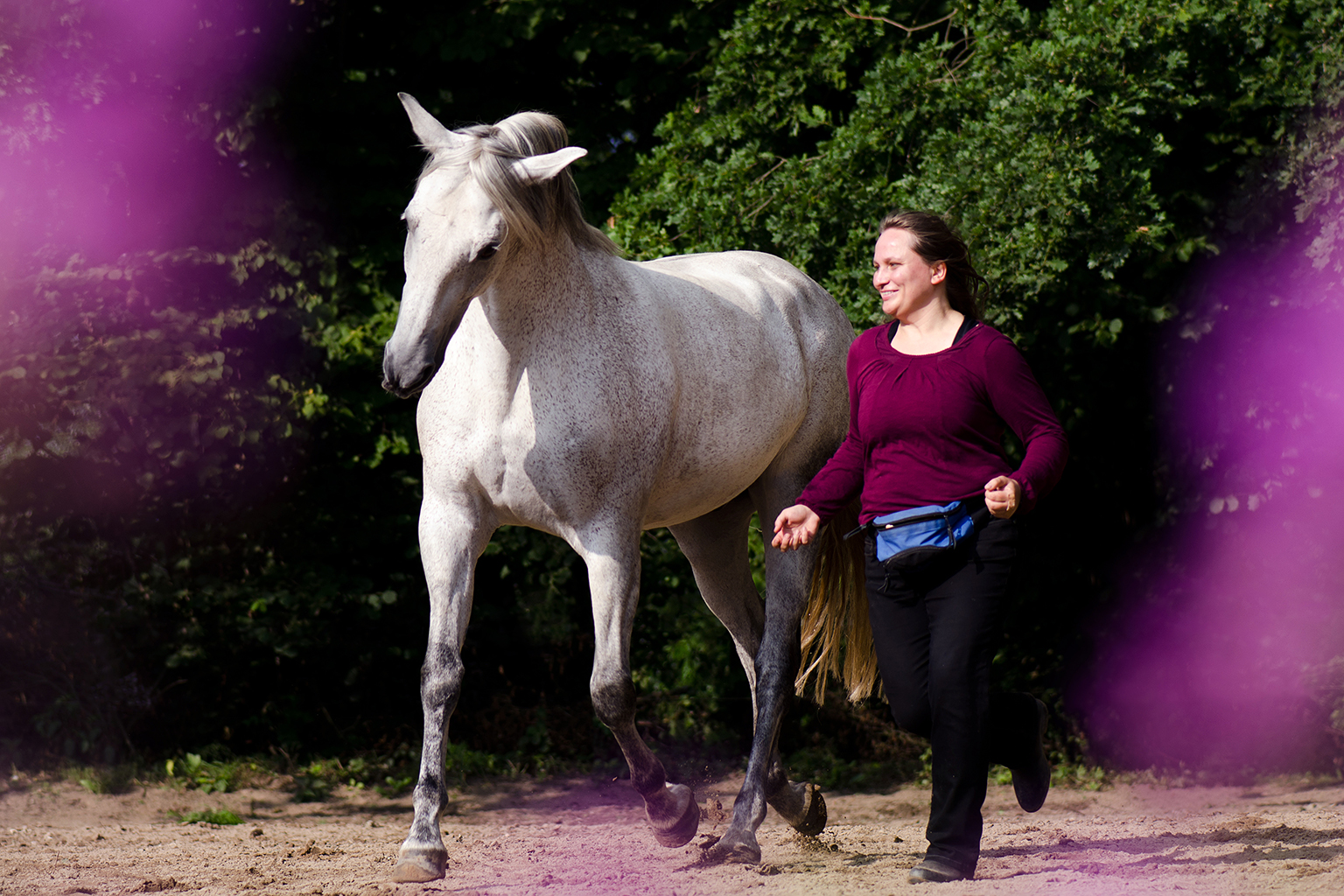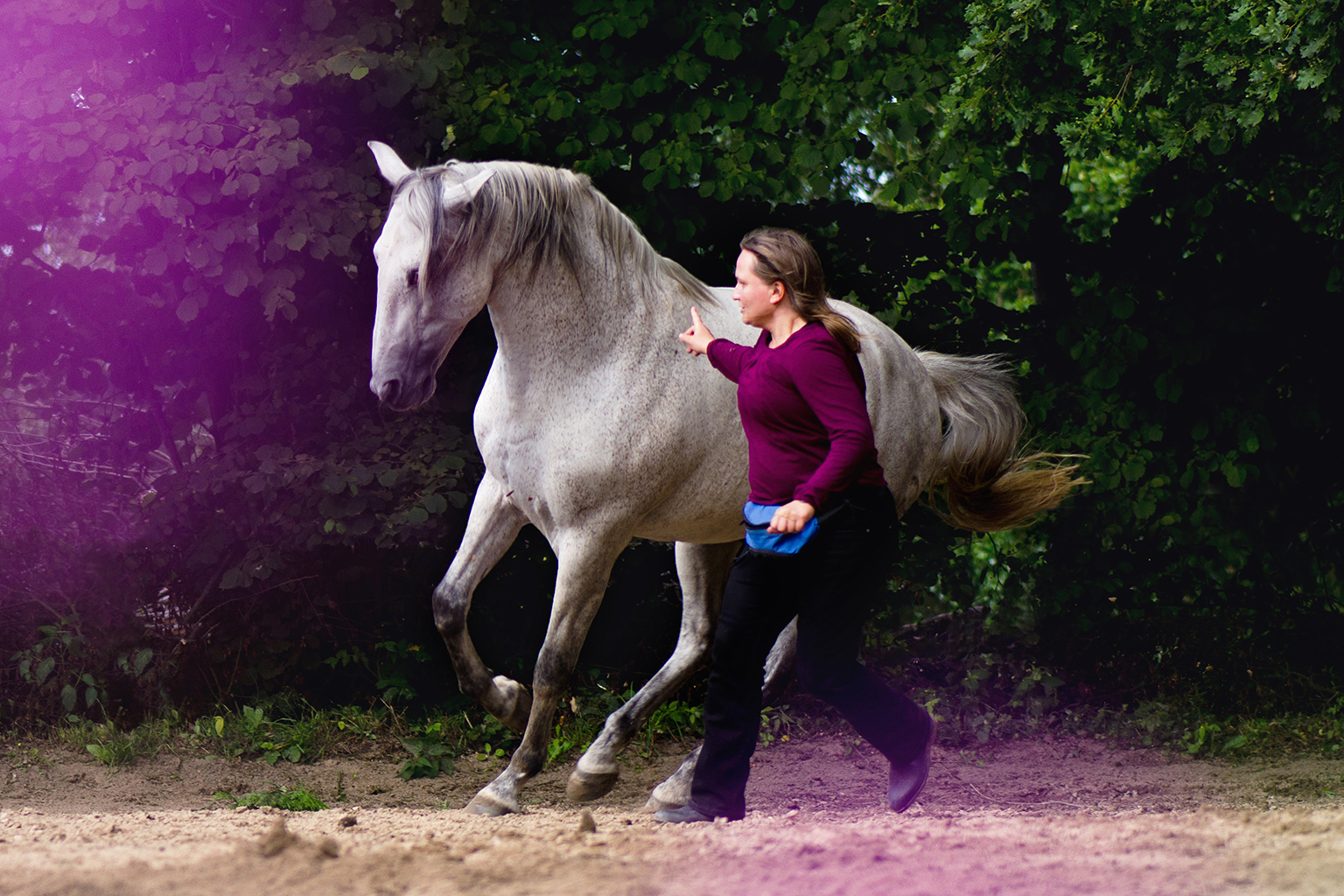Discover free work – Video 2
Rediscover joy of movement
We continue to rediscover the joy of movement in our seminar with Lea and her thoroughbred Arabian horse Salima. After having and raising a foal, the mare shows little energy, and is not as enthusiastically absorbed in free work as before. So, we would like to reignite her enthusiasm for free play of movement. We carefully engaged Salima’s personal preferences, and step by step, our common dialogue of movement led her to regain her original cheerfulness.
Subtitles available in German and English
Switch between collection and pace
Free work consists of frequent changes between movement patterns and movement quality. It is highly exhausting for humans and animals to remain in the same position for a longer period of time. So, alternating different forms of movement is more motivating, and in addition, more effectively builds muscles; in other words, switching between collection/contraction and reinforcement/stretching enormously benefits both the emotional and the muscular level. It addresses a variety of emotions, and activates various muscle groups. Salima has a lot of training, and is thus able to switch with ease from free piaffes-like kicks, to extended trot, or even canter and back.
When I run, I give everything I’ve got
It can help to free my mind, and release my own mental emergency brake if I aim to encourage a horse to motivate itself and to find a more energetic form of movement. So, my own power can support the horse to develop its power: I literally dash off like Lea in the video, and do not ask myself whether the horse will follow or not. Yet, I try to focus on myself, and run at my own pace.
Give rise to collection
So, you can find your own pace in yourself, and you can similarly find collection deep within. For example, the way Salima bends her haunches in the video cannot be forced upon her but arises by itself from her well-developed awareness of the body.
Let movement flow
Free work is not only about alternating relaxation and energy but also about developing and improving the quality of movement. Different movement patterns of require various amounts of flexibility in the joints; in general, the harder the lesson, the more flexibility is required. For example, Salima’s performance of the passage shows how gracefully her joints bend. Furthermore, she is able to let this smoothness flow through her entire body, and thereby gains the energy and flexibility to perform pesade.

Our mental brake
We frequently prevent our horse from moving energetically ourselves by establishing so called mental brakes. Our body does not vibrate enough so that we do not communicate enough, and thus are not able to create space for the exchange of motion energy. In contrast, Lea demonstrates an ideal case of a movement dialogue in our video: She is grounded and rests in her center whenever it comes to serenity, relaxation and collection; she supports Salima’s rapid movements with her own flowing, and vibrating emotions. Consequently, it might be beneficial to remind yourself to do some movement exercises; the more you feel your joy of movement, and translate your emotion into motion, the more easily you will be able to motivate your flexible, cheerful horse.
Direct the flow of energy
Of course, this kind of energy work requires a lot of tact. It can easily happen that you zealously go beyond your objective, the energy level rises far too high, and the horse becomes stressed. Some sequences of the video show Salima tossing her head and swishing her tail, both possible indicators of stress. So, it is important to aim for establishing emotional balance just like Lea does. This work is about developing harmony together, and not about exciting the horse to perform ever more spectacular movement patterns.

Keep restoring the calm
Salima always and clearly shows serenity after more exciting moments; she calmly takes food, she directly stands even after pesade, and she immediately relaxes. These are fundamental aspects that form the basis of our common free work, and we have to self-critically question our own role in the training process if we are not able to gently direct the balance between relaxation and energy in the desired direction. Basically, it should be possible to operate the energy regulator, so to speak, in each and every second of training in both directions: either „more energy and power“ or „more serenity and relaxation“. An intense focus on either one of these poles creates an imbalance in training, and it might happen that harmony vanishes. So, I prioritize having inner calm in my work because it is the foundation of motion energy and not vice versa.
Marlitt Wendt & Conny Ranz




